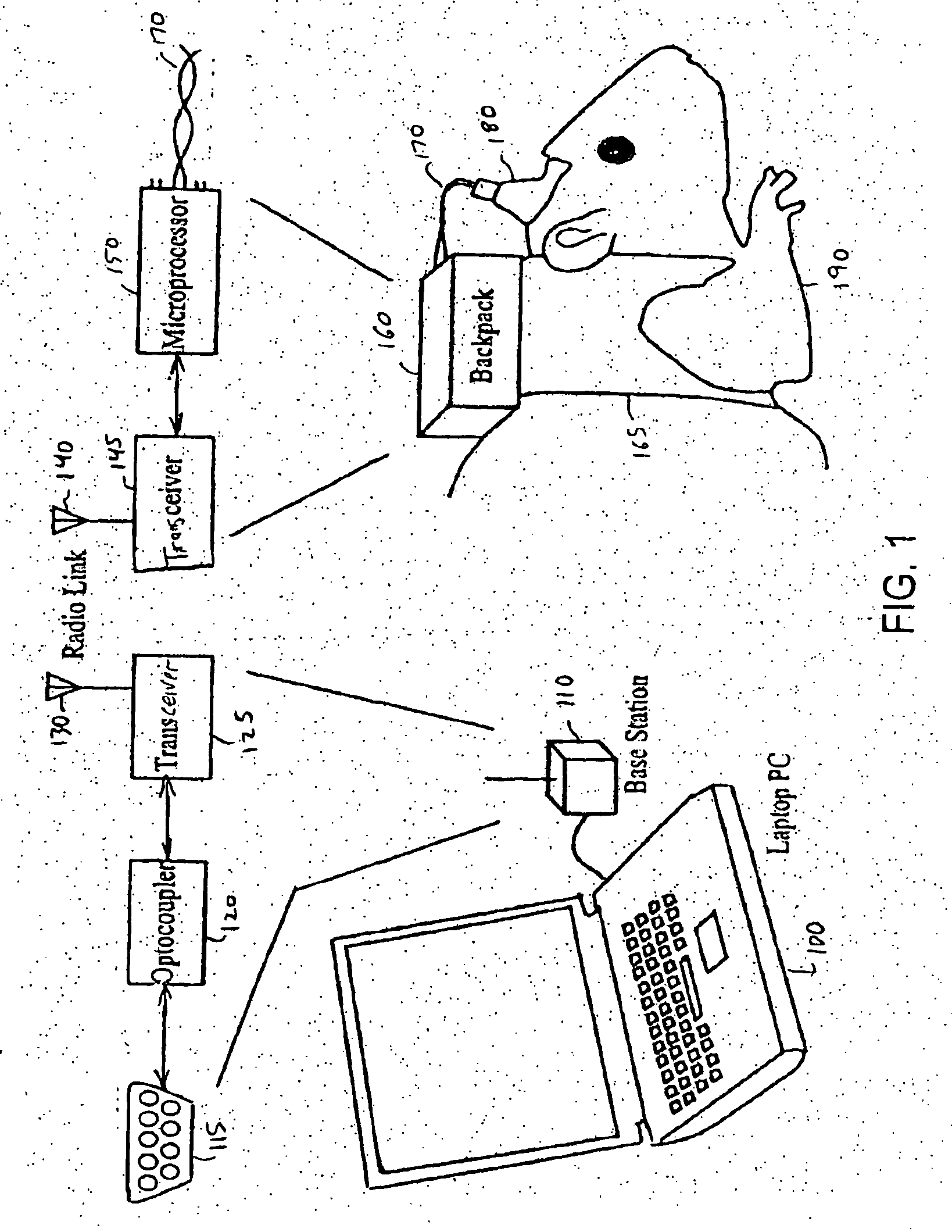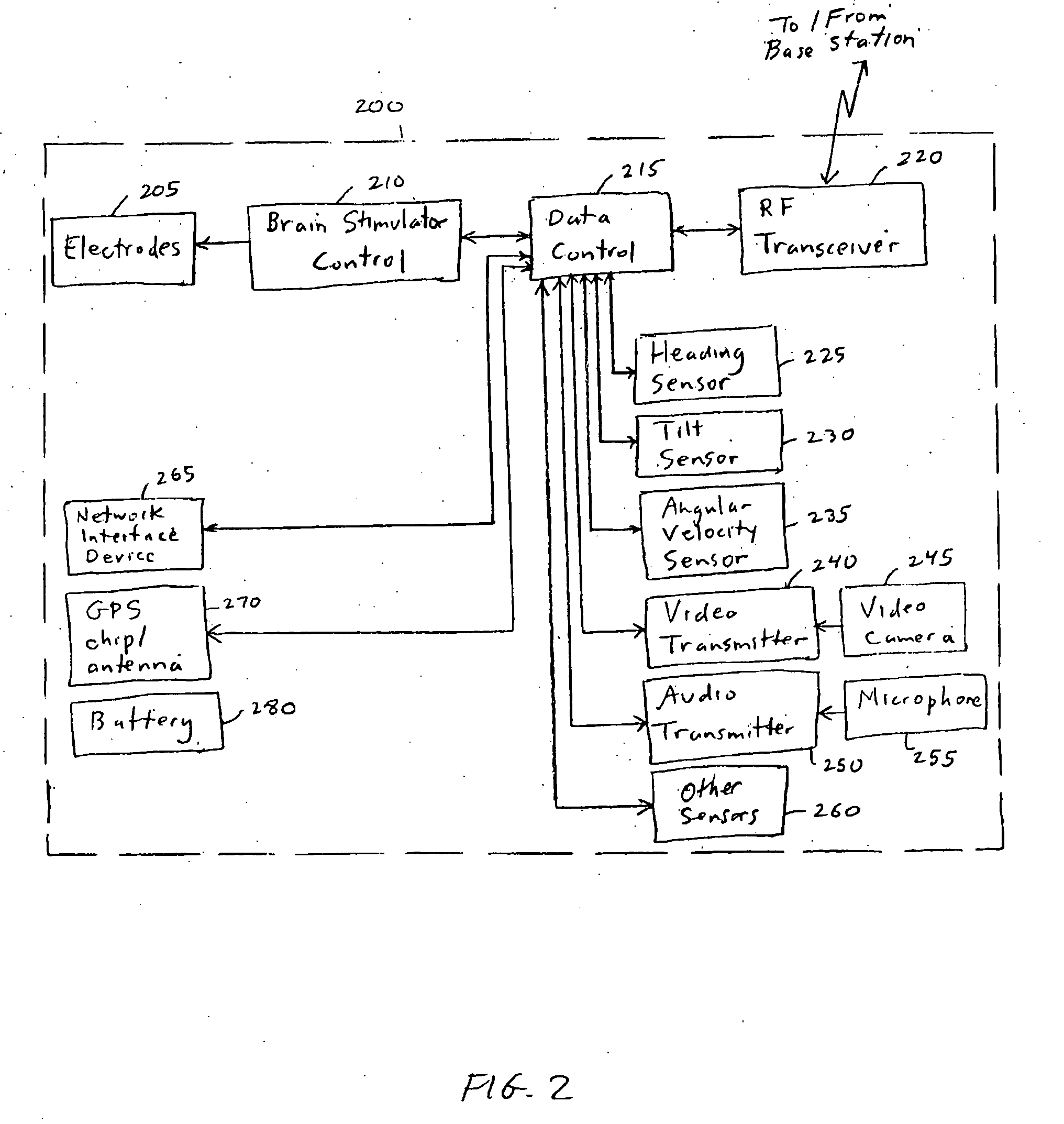Method and apparatus for teleoperation, guidance and odor detection training of a freely roaming animal through brain stimulation
a brain stimulation and odor detection technology, applied in the field of guiding the movement of animals, to achieve the effect of increasing the capability of this technology
- Summary
- Abstract
- Description
- Claims
- Application Information
AI Technical Summary
Benefits of technology
Problems solved by technology
Method used
Image
Examples
Embodiment Construction
[0021]FIG. 1 illustrates an overview of a multichannnel telestimulation system showing the main components of the system and the signal flow. In one possible approach, a laptop personal computer 100 receives commands from an operator, e.g., via specific keystrokes, for guiding movement of a freely roaming animal 190, such as a rat. The laptop 100 sends a control signal to a base station 110 via a serial RS232 port 115. The term “base station” is meant to encompass any component used by an operator to remotely control the animal. An optocoupler 120 processes the signal and provides it to a transceiver (transmitter-receiver) 125, e.g., as a transistor-transistor logic (TTL) signal. The transceiver 125 transmits the signal via antenna 130 and a radio link to an antenna 140 of a transceiver 145, which is carried by the animal 190, such as in a backpack 160 that is secured to the animal using a cloth harness 165 that wraps around the neck of the animal. One possible such backpack availab...
PUM
 Login to View More
Login to View More Abstract
Description
Claims
Application Information
 Login to View More
Login to View More - R&D
- Intellectual Property
- Life Sciences
- Materials
- Tech Scout
- Unparalleled Data Quality
- Higher Quality Content
- 60% Fewer Hallucinations
Browse by: Latest US Patents, China's latest patents, Technical Efficacy Thesaurus, Application Domain, Technology Topic, Popular Technical Reports.
© 2025 PatSnap. All rights reserved.Legal|Privacy policy|Modern Slavery Act Transparency Statement|Sitemap|About US| Contact US: help@patsnap.com



